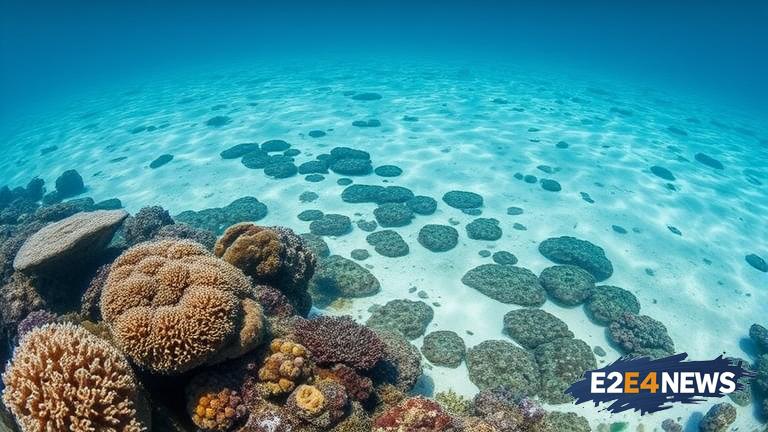The Great Barrier Reef, located off the coast of Australia, is facing an unprecedented threat from coral bleaching, which has left large portions of the reef system damaged and dying. This catastrophic event is the result of rising sea temperatures, caused by climate change, which have stressed the coral to the point of expelling its algal symbionts, turning white and often leading to death. The reef, which stretches over 2,300 kilometers, is not only an iconic natural wonder but also provides important ecosystem services, including shoreline protection, water filtration, and habitat for a vast array of marine life. The current bleaching event is the third in just five years, with the previous two events occurring in 2016 and 2017. Scientists have warned that the frequency and severity of these events are increasing, posing a significant threat to the long-term survival of the reef. The Australian government has pledged to take action to protect the reef, including reducing pollution and promoting sustainable fishing practices. However, many experts argue that more needs to be done to address the root cause of the problem, which is climate change. The reef’s demise would not only have significant environmental implications but also economic and social consequences for the thousands of people who depend on it for their livelihood. The tourism industry, which generates billions of dollars in revenue each year, would be severely impacted, as would the fishing industry and other businesses that rely on the reef. Furthermore, the loss of the reef would also have a profound impact on the cultural heritage of the indigenous communities who have lived in harmony with the reef for thousands of years. The Australian government has established a number of initiatives aimed at protecting the reef, including the Reef 2050 Plan, which outlines a long-term strategy for preserving the reef’s health. However, the plan has been criticized for not doing enough to address the scale and urgency of the problem. In addition to government action, there are many things that individuals can do to help protect the reef, such as reducing their carbon footprint, supporting organizations that work to conserve the reef, and spreading awareness about the importance of preserving this incredible ecosystem. The international community also has a critical role to play in protecting the reef, through initiatives such as the Paris Agreement, which aims to limit global warming to well below 2 degrees Celsius. Ultimately, the fate of the Great Barrier Reef will depend on the collective actions of governments, businesses, and individuals around the world. It is imperative that we take immediate and sustained action to reduce our impact on the environment and to protect this incredible natural wonder for future generations. The consequences of inaction would be catastrophic, not just for the reef, but for the entire planet. As the world’s largest coral reef system, the Great Barrier Reef plays a critical role in regulating the climate, producing oxygen, and supporting a vast array of marine life. Its loss would have far-reaching and devastating consequences, from the collapse of fisheries to the loss of shoreline protection. The reef’s importance extends beyond its ecological value, as it also holds significant cultural and spiritual value for the indigenous communities who have lived in harmony with it for thousands of years. The reef’s demise would be a tragedy of unprecedented proportions, and it is our responsibility to act now to prevent it. We must work together to reduce our impact on the environment, to support conservation efforts, and to promote sustainable practices that prioritize the health of the reef and the planet. The clock is ticking, and the fate of the Great Barrier Reef hangs in the balance. It is time for us to take action, to make a difference, and to ensure the long-term survival of this incredible ecosystem.




